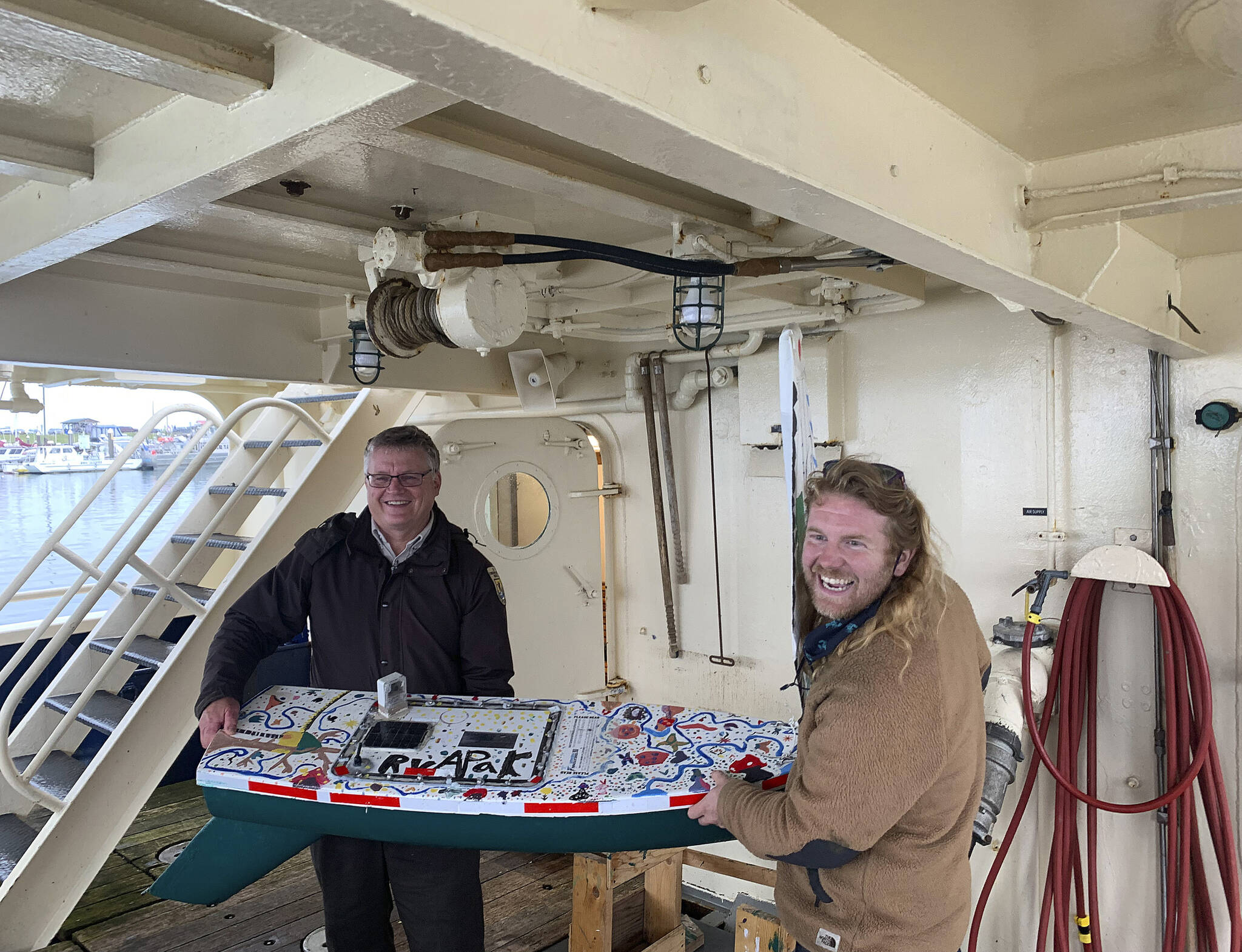Continuing a project fueled by the spark of scientific inquiry, Chapman Elementary School students’ mini-boat, the “R/V APAK,” will depart from Homer this week aboard Alaska Maritime National Wildlife Refuge’s research vessel, the Tiglax.
Center for Alaskan Coastal Studies’ Wynn Nature Center/Coastwalk Coordinator Henry Reiske was present for the transfer of the mini-boat. Supported by the Bureau of Ocean Energy Management, Chapman Elementary School students built the boat this spring following the direction of Reiske and teacher Trent Herbst.
Reiske told Homer News that the R/V APAK is a mini-boat that is equipped with sensors which transmits data back to Homer that includes temperature, location and even photos. The mini-boat is joining the Tiglax in order to be launched near Adak, west of the Alaska Peninsula. This grand journey occurs after two successful “test floats” in Kachemak Bay.
Speaking on the importance of the creation of the mini-boat and its upcoming journey, Reiske said the “continued project” is “powerful for students.” He said students asked him, “‘Why can’t we do things like this every day?’”
Additionally, Reiske said the knowledge learned while collaborating on this project will be “important for any student who will be on the water in the future.” Students learn about oceanography, but also teamwork, patience, and curiosity.
The Tiglax will be transporting the mini-boat as its team performs their own duties. As the R/V APAK sits on the deck waiting for its launch, Refuge Manager Steve Delehanty and his team will be responsible for studying tufted puffins, replenishing resources at multiple research camps and cleaning up islands across the state which have become inhabited by invasive species.
When the R/V APAK finally launches into the Bering Sea, the hope is that it will sail for about a year, transmitting data back home all the while, before it is recovered. Reiske says he hopes for there to be a final project completed by Chapman students about a year from now. Getting to have “our own data,” is great, according to Reiske, as it allows meaningful, long-standing conclusions for the local youth.
Due to the success of the mini-boat project within the Chapman classrooms, Reiske hopes to reiterate this project annually with a new boat being created and launched by new, eager students. Ambitions also include enrolling other schools, like McNeil Canyon Elementary, to have their own versions of the nautical education project.
The endeavors of the R/V APAK can be followed along at home at https://educationalpassages.org/boats/apak/.


